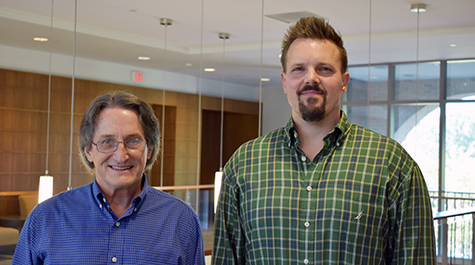Supporting veteran families: A counseling framework adapted by W&M researchers aims to ease reintegration after deployment
Successfully blending of a military member’s natural family and unit family could ease the process of reintegration after deployment, according to an article published in the April 2018 issue of The Family Journal by William & Mary School of Education marriage and family counselor educators.
The article makes the case that the powerful emotional and logistical ties service men and women have to one another can create a powerful “unit family.” Co-authors Charles McAdams, professor of counselor education; Victoria Foster, professor of counselor education; and counseling student David Gosling Ph.D. ’20, suggest that active duty personnel returning from deployment can benefit from family therapy that addresses the tensions that can arise between the natural and unit families.
The article developed out of research McAdams was conducting for a chapter titled “Resilient Military Families” that he authored for Bulletproofing the Psyche, a 2018 book that reviews current best practices in military mental health alongside personal stories from veterans and active duty personnel. McAdams, a Vietnam-era veteran of U.S. Naval Special Warfare, said that while there has been considerable research conducted relating to returning veterans coping with PTSD, traumatic brain injury, and other physical disabilities, there has been far less research generally into the ways in which families can effectively adjust to a spouse or parent returning from deployment.
Through his research and personal experience, McAdams has come to view the unit of men and women who serve directly with a deployed soldier much like a family unit with the same kinds of structure, authority figures, and dynamics that a natural family has. He explained: “We’ve talked about the need to reintegrate the returning soldier into the natural family, but we’ve not talked sufficiently about the additional need to integrate the unit family into the natural family system.”
Gosling, who recalled experiencing significant conflicts between duty to his unit family and to his natural family when he was reintegrating into civilian society after his tours of duty added that “military members become so deeply enmeshed in their units that they can become closer to those people than they are to their own families. This can lead to significant tensions and conflict, which contributes to some of the outcomes that concern us, such as divorce, substance abuse and suicide.”
McAdams had experienced similar tensions as well, albeit decades earlier, leading him to observe that “this is an issue that is consistent for military members across time.”
In looking for an intervention framework to apply to the merger of these two “family” systems after deployment, McAdams and colleagues drew from existing strategies for working with blended families in other situations, such as remarriage after death or divorce. In particular the framework emphasizes the need for both spouses to understand the stressors they each endured during deployment, to acknowledge the emergence of the unit family during deployment and to develop mutually acceptable rules of engagement for navigating the post-deployment relationship between the two family systems.
“The article is a conceptual piece that will hopefully lead to a continued line of empirical research on the topic aimed at better understanding and improving reintegration in military families,” explained Gosling, who spent eight years in active duty as an infantry officer, and completed two tours in Iraq.
McAdams acknowledged that the article focuses primarily on the relationship between spouses, because strengthening that is arguably beneficial for any children in the household.
Gosling, Foster and McAdams hope that the new framework for understanding and addressing the negotiation of ties between the unit family and natural family will both validate an experience that military families are already having, and provide additional guidance to counselors working with these families.
Foster added that although the article focuses on military families, “This can help us think about other kinds of families that face hardships where one or both partners are away for long periods, and how that changes the way the family is constructed.”
Their work on the unit family concept has been presented to the International Association of Marriage and Family Counselors (IAMFC), and will be presented at the Southern Association for Counselor Education and Supervision (SACES) conference in Myrtle Beach in October 2018. McAdams said that colleagues in the field, particularly those with military backgrounds or military clients, have received the work positively.
Interested in the Military and Veterans Counseling specialization at William & Mary? Learn more here.
